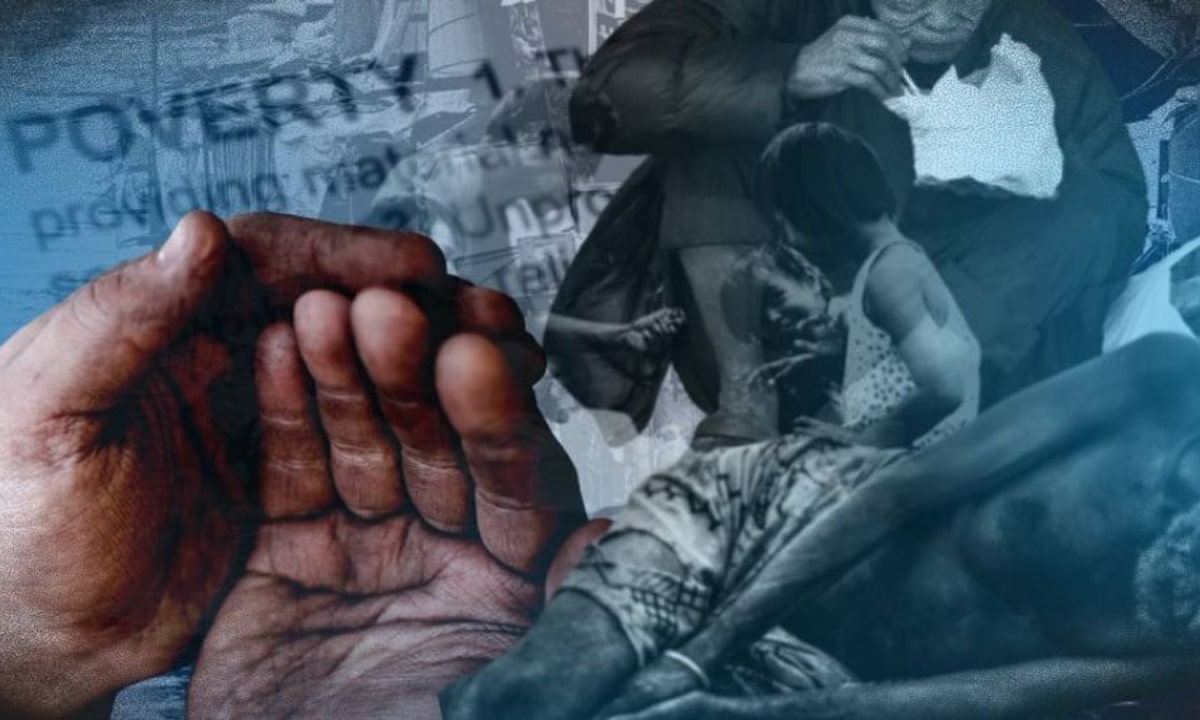
Composite image from Inquirer file photos
MANILA, Philippines — Filipino families who consider themselves poor continued to increase in the fourth quarter of 2024, with half of them—the highest in more than 20 years — rating themselves food-poor, or unable to afford or access food that make up a healthy diet.
The latest Social Weather Stations (SWS) survey released on Wednesday showed that Filipino families who consider themselves “mahirap” or poor rose to 63 percent in the last quarter of 2024, the highest recorded since the 64 percent in November 2003.
Conducted from Dec. 12 to 18, 2024, the survey revealed a steady rise in self-rated poverty, with a significant increase from 46 percent in March 2024, to 58 percent in June, inching up to 59 percent in September, and finally reaching 63 percent in December.
READ: Poor, Borderline, Not Poor
This resulted in the 2024 annual average for self-rated poor families of 57 percent, a nine-point increase from the 48 percent recorded in both 2023 and 2022.
Meanwhile, the percentage of respondents identifying themselves as borderline (placing themselves between poor and not poor) fell to 11 percent in December 2024 from 13 percent in September and 12 percent in June.
The percentage of respondents who rated themselves as “hindi mahirap” or not poor decreased to 26 percent from 28 percent in September and the record-high 30 percent in June 2024.
High prices
The survey also measured self-rated food poverty, based on the type of food consumed by families.
According to the survey, 51 percent of families rated themselves as food-poor, a five-point increase from 46 percent in September and June 2024 and the highest level in more than 20 years, matching the 51 percent recorded in March 2004.
This brought the 2024 annual average food-poor families to 44 percent, a nine-point increase from the 35 percent in 2023.
Meanwhile, 13 percent identified themselves as food borderline (placing themselves between food-poor and not food-poor) and 36 percent considered themselves not food-poor.
Compared to September 2024, the percentage of food borderline families dropped by four points from 17 percent, while not food-poor families barely moved from 37 percent.
Inflation, which measures the rate of increases in the prices of food and other essential items, rose to 2.9 percent in December, faster than the 2.5 percent recorded in November and brought the average price growth for 2024 to 3.2 percent, according to the Philippine Statistics Authority.
Food prices last year were affected mainly by the drought brought by the El Niño weather phenomenon in the summer months and the series of typhoons that battered the country toward the end of 2024.
According to the Department of Agriculture, the El Niño phenomenon severely battered the Philippines and damaged P15.3 billion worth of livelihood in farming and fishing communities.
Worst in Mindanao
The four-point increase in the nationwide self-rated poverty between September and December 2024 was due to increases in the Visayas and Mindanao, combined with a steady percentage in Luzon outside Metro Manila and a slight decrease in Metro Manila.
According to the survey, self-rated poverty was highest in Mindanao at 76 percent, followed by the Visayas at 74 percent, Luzon outside Metro Manila at 55 percent, and Metro Manila at 51 percent.
Compared to September 2024, self-rated poverty rose by 12 points from 62 percent in the Visayas, and nine points from 67 percent in Mindanao.
However, it remained steady at 55 percent in Luzon outside Metro Manila, while it hardly moved from 52 percent in Metro Manila.
The percentage of borderline families decreased across all regions.
In the Visayas, the figure dropped by seven points, from 22 percent to 15 percent. In Metro Manila, Luzon outside Metro Manila, and Mindanao, the percentage saw minimal changes, with only a one-point decrease in each area.
‘Not poor’
The percentage of families who rated themselves as not poor also declined.
In Mindanao, it dropped by eight points, from 23 percent to 15 percent, while in the Visayas, it decreased by five points, from 16 percent to 11 percent. In Metro Manila, it increased slightly to 40 percent from 38 percent, while in Luzon outside Metro Manila, it edged up to 34 percent from 33 percent.
The fourth quarter SWS survey used face-to-face interviews among 2,160 adults. It had sampling error margins of plus-or-minus 2 percentage points for the national percentages, plus-or-minus 3 percentage points for Luzon outside Metro Manila and plus-or-minus 5 percentage points each for Metro Manila, the Visayas and Mindanao.